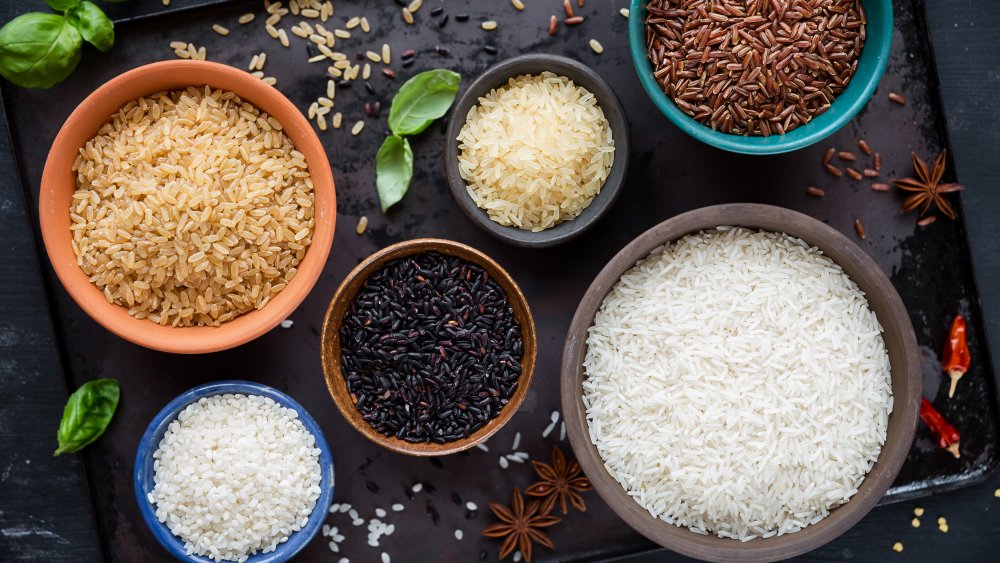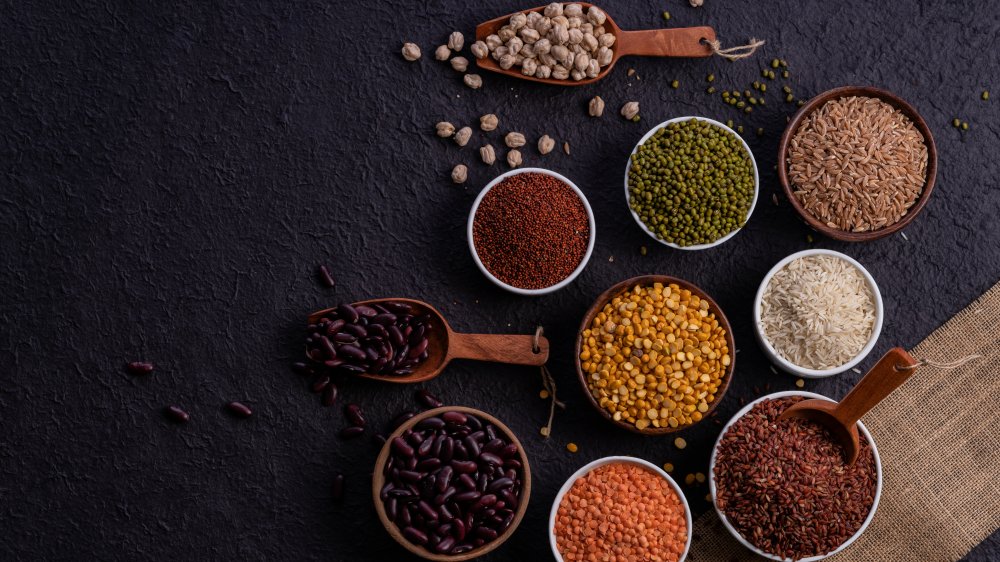Here's What You Can Substitute For Rice
Rice is a universal base for so many diverse dishes, ranging from curries and fried rice to soups and stews — or even sides. The comforting grain is perfect for soaking up sauces or simply eating with a little bit of fat, like butter or oil, and topped with your favorite seasonings. No matter what rice recipe is your go-to, there are several substitutes for rice when the pantry is low or you are completely out of this staple grain.
While rice is easy to stock up on thanks to its long and stable shelf life, that shelf life eventually comes to an end at some point. If you find you're out of rice, or you're not sure if you should use the rice you have on hand for fear it's too old, there are options.
Pasta substitutions like orzo and couscous are good alternatives to rice. Cereals and grains are a few other easy substitutions. Ingredients like kasha (also known as buckwheat, according to The New York Times), quinoa, wheatberries, barley, and bulgur all fall into that category. For each cup of white or brown rice, 1 cup of quinoa or bulgur can be swapped in. One cup and a quarter of couscous is the equivalent of 1 cup of rice, while 1 1/3 cup is the measurement for wheatberries. A cup and a half of kasha can be traded per cup of rice, while 2 cups of orzo will level out to the equivalent of 1 cup of rice. Finally, use only 3/4 cup of barley per cup of rice (via Huffpost).
Which rice substitutes work best
Depending on what you are making with rice, some substitutions hold up better at room temperature than others. For dishes like casseroles, soups, stews, curries, and risottos, using a pasta like orzo or couscous is ideal. In these dishes, rice absorbs as much of the liquid or sauce as it can hold. Some pasta has a rougher texture that absorbs more liquid than others (via Cooks Illustrated). That makes these kinds of pasta a better substitution in these types of dishes.
For recipes like fried rice, rice bowls, alternative burgers, or even stovetop casseroles or rice bakes, cereals and grains might perform better than orzo or couscous. Grains like quinoa and buckwheat hold together well, especially with a binding agent like an egg or breadcrumbs. This allows you to make foods like burgers or even alternative arancini, which is fried rice balls stuffed with cheese (via Bon Appetit).
Ingredients like wheatberries and barley also work well as substitutes in rice bowls (via Epicurious). Bulgur is great for stir-fries too (via All Recipes). No matter what you are making or what you have on hand, consider the texture of the rice substitute you have and how it will affect the dish you are using it for. The texture of the substitute will certainly affect the overall outcome of the dish because of its ability to thicken, bind, or even absorb some liquid.

